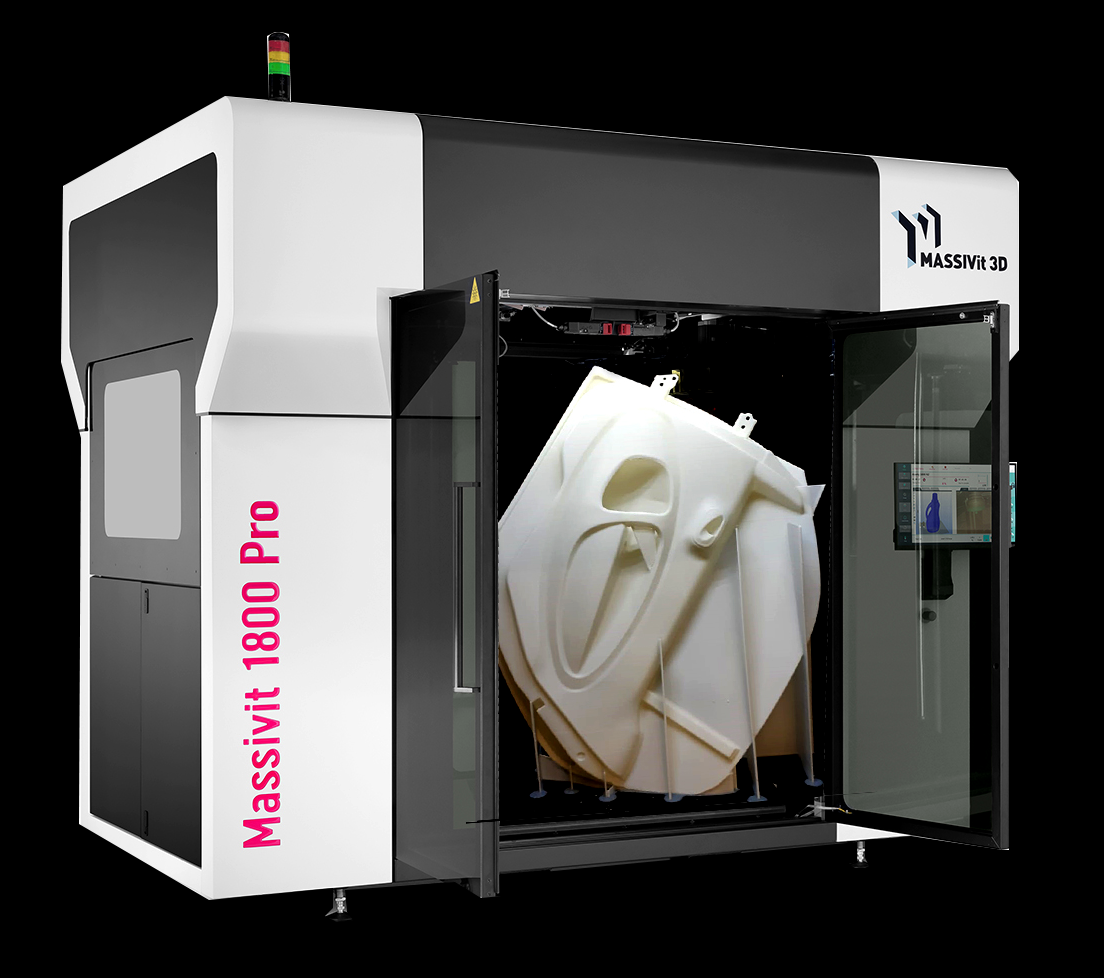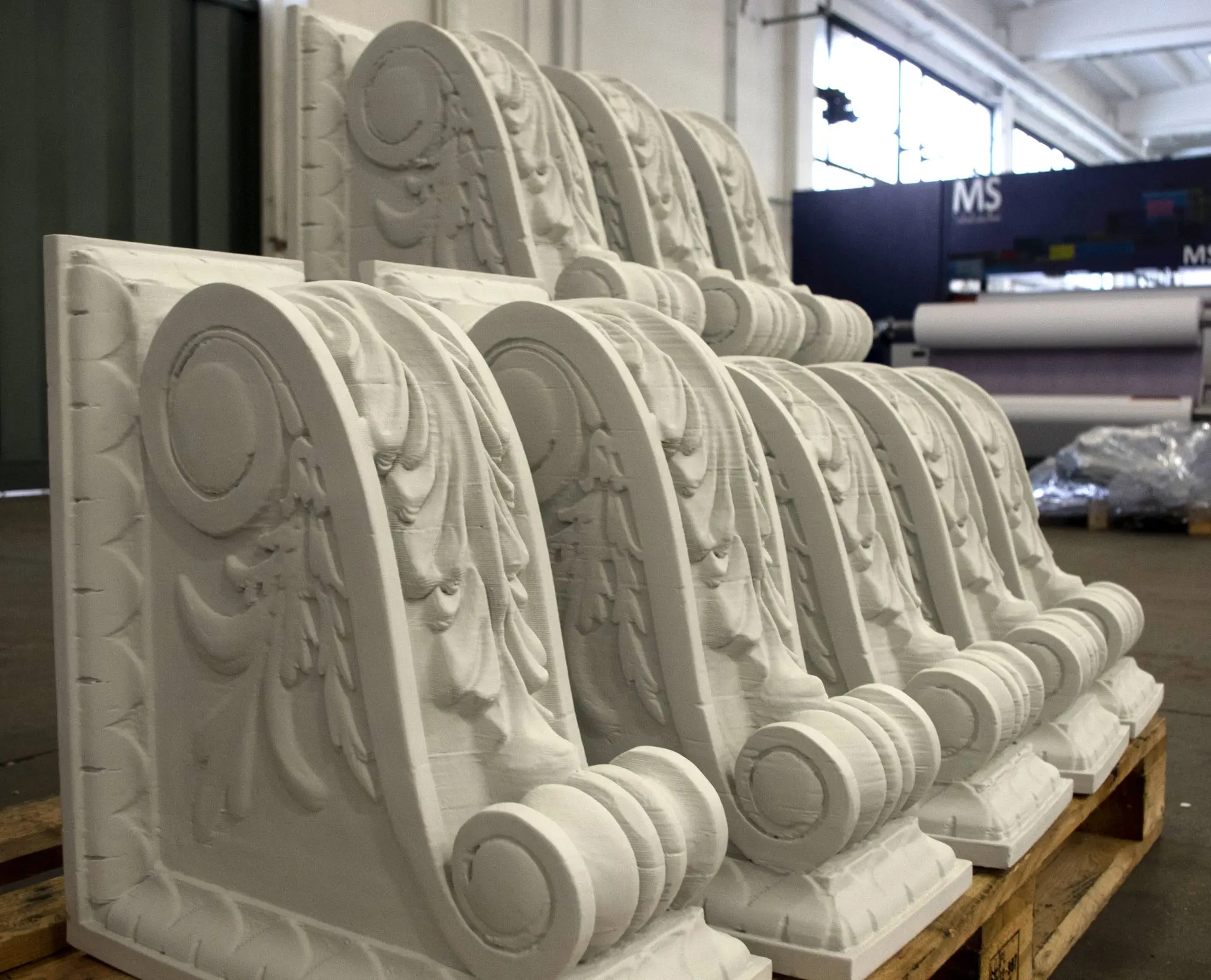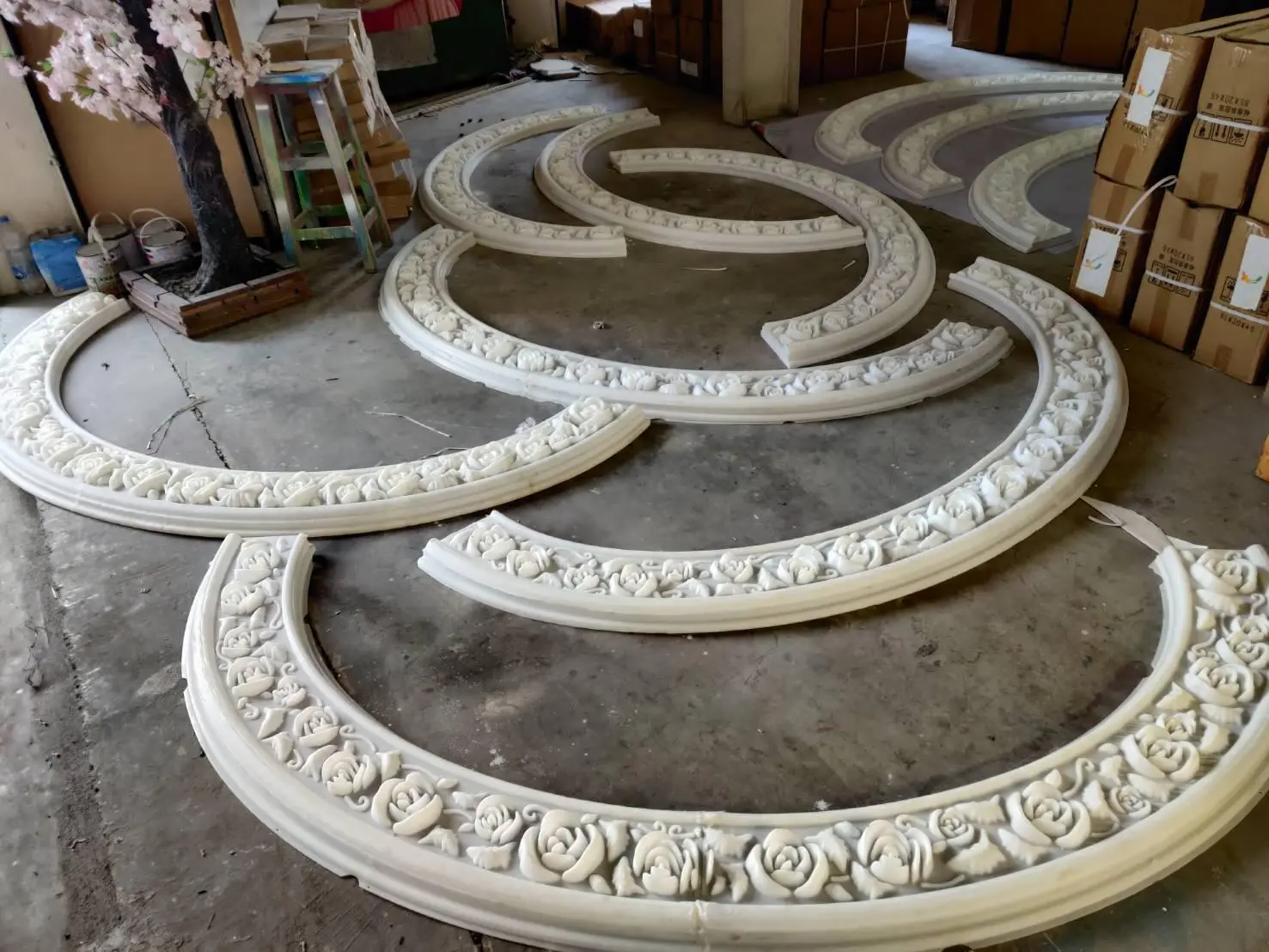The introduction of 3D printing – in any form – into the construction industry is among the most fascinating and, at the same time, challenging endeavor. On the one hand, the most advanced and technologically complex, digital manufacturing processes; on the other an industry that has notoriously been slow to introduce change. For these reasons, many see construction as the area with the highest potential for 3D printing innovation. And business. The shift is going to be gradual and any potential adopter will benefit from introducing 3D printing technologies that can significantly enhance traditional construction practices. Massivit 3D’s large-volume 3D printing technology for construction is doing just that. By providing cost-effective 3D printed tools to leverage the geometric benefits of AM, without foregoing the use of traditional materials, Massivit 3D is enabling innovative constructions and restorations. These projects – from statues to capitols and decorations of historical Italian palaces – would not have been cost-effective by either traditional construction methods or direct concrete 3D printing.
In order to understand how this is possible, we need to take a step back and look at Massivit 3D’s unique Gel Dispensing Printing (GDP) technology. The company’s large-format Massivit 1800 3D printer extrudes the Dimengel 100 and Dimengel 90 proprietary photo polymeric acrylic gel materials. As the materials are cured by UV light during extrusion and do not require cooling, the process is rapid and cost-effective. Applications of Massivit 3D’s technology have already been broadly adopted in the scenic entertainment and growing 3D visual marketing sector. The benefits of this process in concrete construction are now becoming increasingly evident in the production of concrete casting molds and potentially full-size formworks.
Massivit 3D’s massive Massivit 1800 Pro 3D printer.
Through a combination of the Massivit SMART V4.5 software’s advanced capabilities to reduce material use, and the low cost of the Dimengel materials, the process is extremely sustainable, both economically and environmentally, while also providing very significant design benefits in terms of geometry freedom for columns, slabs and walls.
The result is an optimized structure that uses far less concrete. The ability to produce hollow joints and end parts allows for minimal use of printing materials as well as overall reduced use of concrete by creating more efficient structural elements. In addition, it eliminates the bottlenecks deriving from the lengthy multi-step process required for producing a silicon mold from a master pattern. Finally, unlike direct construction 3D printing technologies, it allows for the use of any traditional concrete material mixtures. Massivit 3D’s Dimengel 100 is resilient to any type of chemical corrosion from concrete or plaster, including a large variety of polymeric concrete and polymeric plasters. This enables the production of robust, intricate structures without the need to use a release agent.
Re-learning to build
While it does provide a more accessible approach to construction 3D printing, the use of Massivit 3D technology for 3D printing formworks is a state-of-the-art technology that leverages advanced digital tools. Massivit Smart V4.5 Pro software uses an algorithm that enables the printing of hollow objects. The software also supports mold preparation by enabling the micro support to be printed on the external surface of a mold, thereby allowing the inside of the mold to remain smooth enough for casting. As Ido De-La-Vega, Applications Team Manager at Massivit 3D explains “the technology is ideal for one-offs, short runs, or complicated objects that would not be cost-effective or feasible otherwise”.
A wide variety of materials can be poured into the 3D printed mold, but concrete and plaster are ideal as there is no chemical adhesion between these materials and Massivit 3D’s Dimengel. Other variations of concrete and plaster can also be used. In particular, polymer concrete is a very strong material, suitable for building applications. It includes a balanced mix of Portland cement, sand, water, silica fume, CSA (to speed up curing), glass fiber, ADMIX mixture (to improve mechanical properties) and plasticizer. Metal reinforcements can be added during the casting. The mold can finally be removed by using just a chisel, hammer and pliers, or by heating the mold with a heating gun to make it softer and easier to peel off.
“The technology is ideal for one-offs, short runs, or complicated objects that would not be cost-effective or feasible otherwise”.Ido De-La-Vega, Applications Team Manager at Massivit 3D
Manufacturing on Demand
Applications: past meets future
Construction applications with Massivit 3D’s technology already expand beyond tools and casts. Some direct 3D printing applications are also possible, either using the polymer material gel alone or by finishing the polymer printed parts with plaster and painting them in the same color as the original counterparts to ensure an authentic look.
Some of the first direct applications of Massivit 3D’s technology in construction were carried out in Italy by Sismaitalia, which was the first Italian business to adopt a Massivit 1800 3D printer.
After initially acquiring the solution to provide customers with interior design applications, the company recognized a gap in the restoration market that could be solved using rapid, large-format 3D printing. In a recent project, the firm built five life-size capitals for the Grand Spada Palace in Ferrara.
Traditional restoration methods involve prolonged turnaround times, mostly due to the manual labor required. “This enables me to realize large projects in short timeframes without compromising on the aesthetics,” confirmed Alberto Apostoli, Architect at Studio Alberto Apostoli.” With 3D printing, the five capitals were produced in two sizes, with the largest nearly one meter tall in just a couple of days of print time. This turnaround speed was enabled partly by the Massivit 1800s two printing heads which allow separate models or parts to be printed in parallel. Once filled, each capital was finished with plaster and painted the same color as the original counterparts to ensure an authentic look.
An even more direct application was introduced by Q-Ads in Thailand. The company took Massivit 3D’s construction capabilities into the future with a set of 3D printed arches for the Ozone Hotel in Bangkok. Due to the translucent nature of Massivit 3D’s DIMENGEL 100 printing material, the arches could also be illuminated internally for a stunning effect.
In the future, different combinations of all these methods will be increasingly integrated with direct construction 3D printing technologies for extremely large building projects. Either way, Massivit 3D will play a massive role in enabling more construction 3D printing applications.
This article was created in collaboration with Massivit 3D and first appeared on 3dpbm’s AM Focus 2020 Construction eBook
* This article is reprinted from 3D Printing Media Network. If you are involved in infringement, please contact us to delete it.
Author: Davide Sher






Leave A Comment